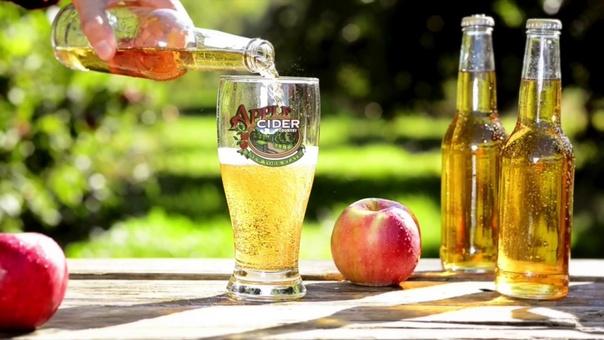Cider has been produced for thousands of years, with the earliest production dating back to ancient Roman and Celtic cultures. Apples are very well suited to cider making as they contain high amounts of malic acid and sugars. Early cider was produced simply by crushing apples and allowing the juice to ferment naturally without added yeasts or other processing. Over time, cider making spread throughout Europe and became an important part of cultures in England, France, Germany and elsewhere. By the Middle Ages, cider had become one of the most popular alcoholic drinks in much of Europe.
English Cider Varieties
England is well known for its long cider making tradition and several iconic English cider styles. Some of the most popular English ciders include:
- Devon Cider - Traditionally made from the local bittersweet culinary apple varieties grown in Devon, England. Devon ciders are often medium-dry to dry with tart and tannic flavors.
- Herefordshire Cider - Known for its complex, full-bodied styles made from a blend of bittersweet and sweet dessert apples. Herefordshire ciders have flavors ranging from berry to dried fruit with high acidity and moderate tannins.
- Somerset Cider - Often sweeter than other English styles due to the use of sweet dessert apples in some areas. Somerset ciders tend to be medium-bodied with aromas and flavors of apples, pears and sometimes honey.
- Kent Cider - Differs from other areas by using a higher proportion of culinary apples which impart vibrant acidity and noticeable quinine-like tannins. Kent ciders have a sharper apple profile compared to other English styles.
French Cider Varieties
Across the English Channel, France is also well-known for unique cider styles influenced by local apple varieties and production methods. Some classic French ciders include:
- Normandy Cider - Characterized by golden color and medium body. Normandy ciders have fresh apple aromas with subtler tannins than English varieties. Crisp, lively acidity is a key element.
- Brittany Cider - Traditionally fermented in large oak vats which impart aromas of vanilla and spice. Brittany cider has high acidity balanced with roundness from barrel aging. Flavors range from tart apple to stone fruit.
- Basque Cider - As unique as Basque culture itself, these cider use native apples grown at high altitude. Aromatics include flowers, herbs and spices with prominent tannins and sometimes lightly sparkling carbonation.
American Cider Varieties
While New World producers cannot match the long history of Europe, American cider makers are developing exciting new styles utilizing local ingredients:
- New England Cider - Crisp and refreshing styles emphasize fresh apple and berry flavors from varieties like McIntosh, Cortland and Jonagold. Low tannins with noticeable acidity make these ciders very food friendly.
- Pacific Northwest Cider - Influenced by the wine industry, these ciders can take on intricate oak characteristics with flavors ranging from citrus and tropical fruit to roasted notes. A diversity of apple varieties are utilized.
- Midwest Cider - Focused on balance, these medium-bodied ciders feature Red or Golden Delicious apples resulting in clean apple profiles that are easy drinking. Carbonation is sometimes incorporated.
The Popularity of Cider
Once a niche beverage, cider has seen steadily rising popularity worldwide in recent years. Its natural qualities help it pair well with food and its lower alcohol content compared to beer appeals to health conscious consumers. As artisanal cider producers experiment with heritage and newer varieties, exciting new styles continue to emerge. With ancient roots yet modern innovation, cider remains an historic beverage enjoying newfound appreciation.
Get More Insights On Cider
About Author:
Alice Mutum is a seasoned senior content editor at Coherent Market Insights, leveraging extensive expertise gained from her previous role as a content writer. With seven years in content development, Alice masterfully employs SEO best practices and cutting-edge digital marketing strategies to craft high-ranking, impactful content. As an editor, she meticulously ensures flawless grammar and punctuation, precise data accuracy, and perfect alignment with audience needs in every research report. Alice's dedication to excellence and her strategic approach to content make her an invaluable asset in the world of market insights.
(LinkedIn: www.linkedin.com/in/alice-mutum-3b247b137 )

